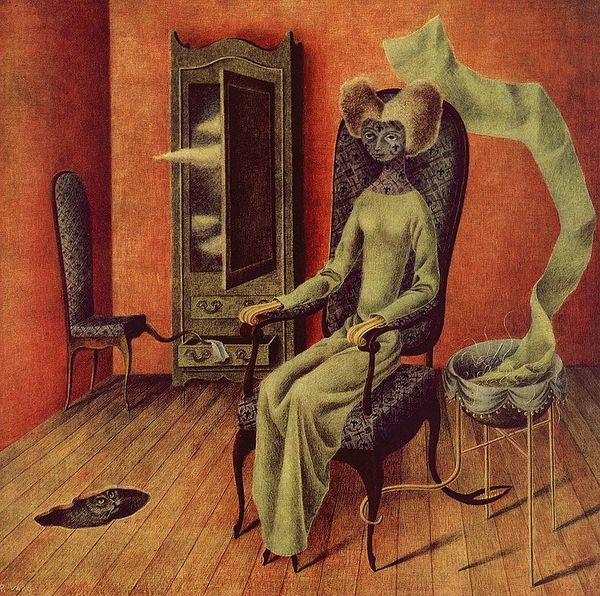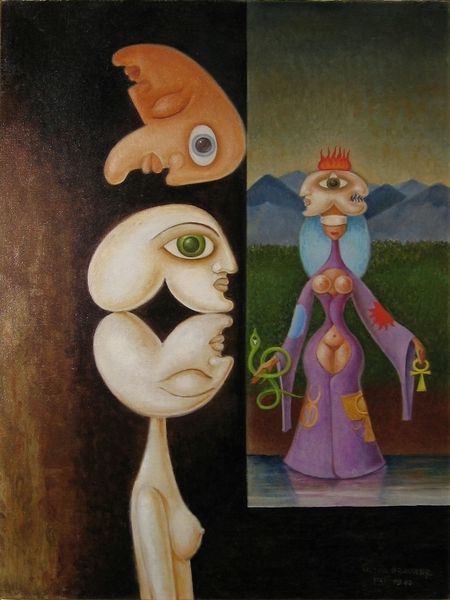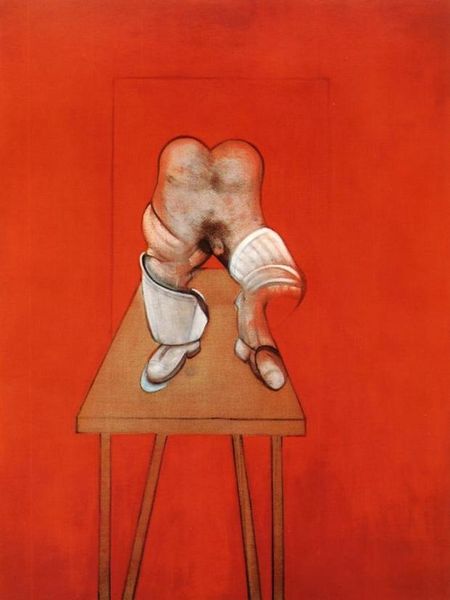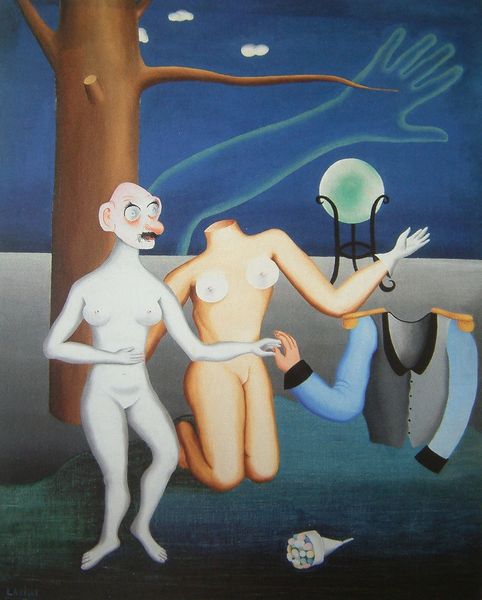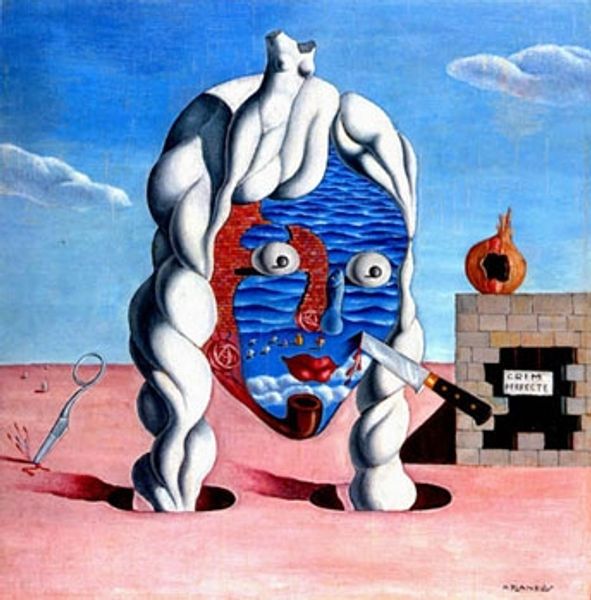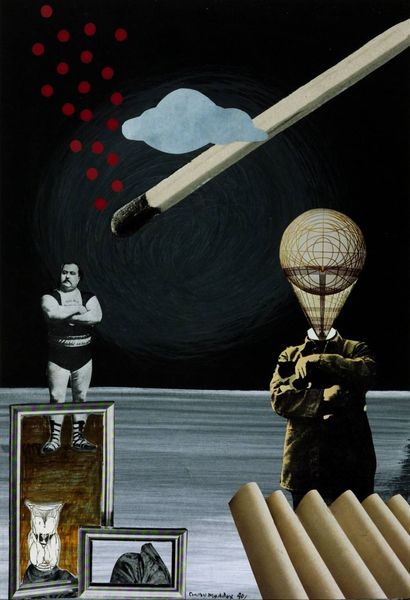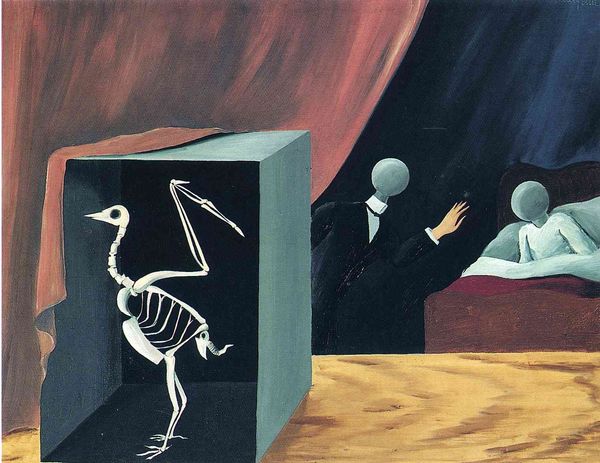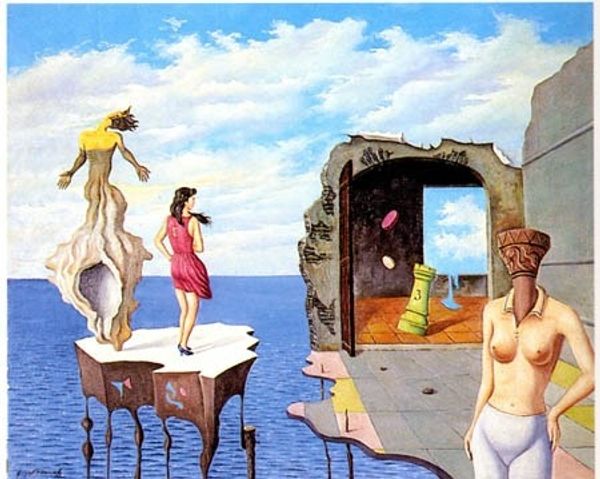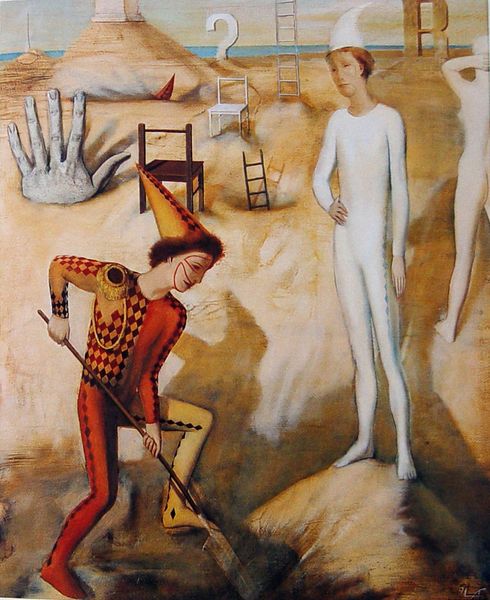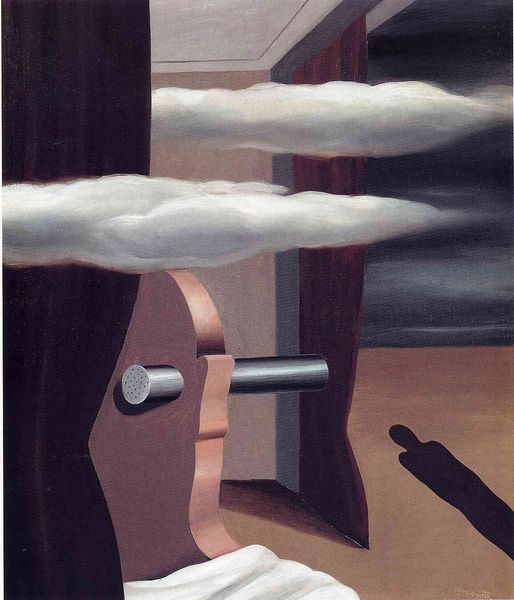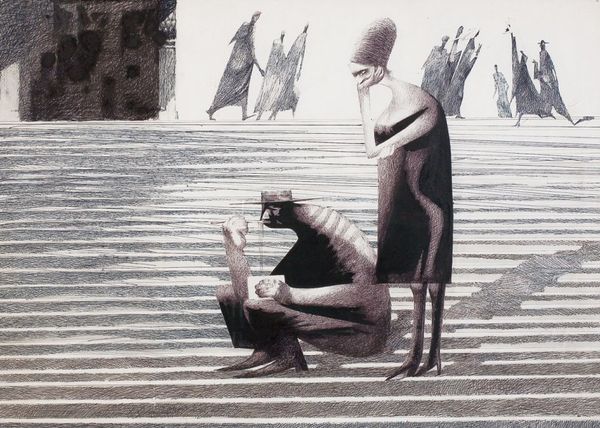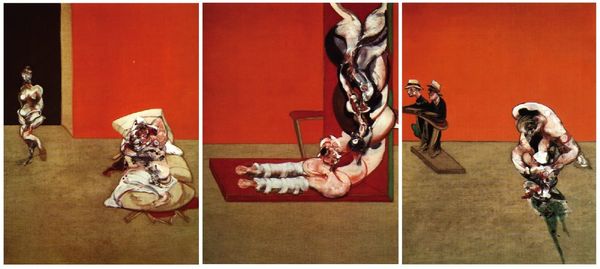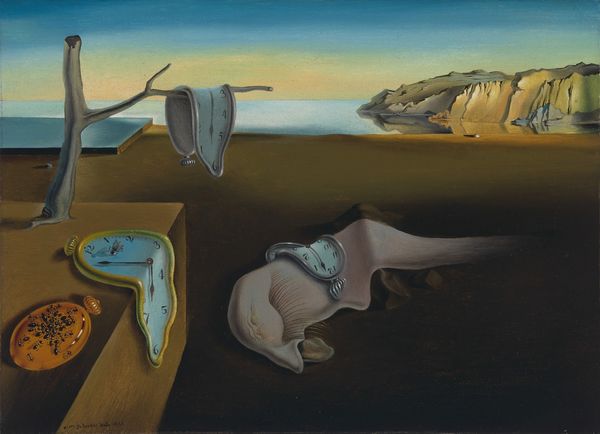
painting, oil-paint
#
portrait
#
narrative-art
#
painting
#
oil-paint
#
figuration
#
oil painting
#
exquisite-corpse
#
surrealism
#
portrait art
Copyright: Angel Planells,Fair Use
Curator: At first glance, this is undeniably unsettling. It’s like a fragmented dream. Editor: This is Angel Planells’s "Hamlet," created in 1938 using oil on canvas. It offers an intriguing take on the famous Shakespearean character. Curator: "Intriguing" is one word for it. That draped blue form in place of a head… what does that evoke for you? The skull, of course, immediately conjures Hamlet’s famous soliloquy. Editor: Absolutely, the skull is iconic, pregnant with meaning about mortality and contemplation, but placed on the extension of the blue shroud, it transforms. It’s almost presented as an offering or perhaps a specimen. Curator: I am struck by the composition, divided as it is. On one side we see a bizarre representation of the protagonist and an abstract setting; on the other we have a quasi-realistic depiction of an interior space, bisected by an expanse that looks almost like a flooded room or unreal floor pattern. The ambiguity is so potent. I think there is a sense of how power dynamics affect an individual placed on a stage set as "Hamlet." Editor: You are right, the power structure seems to permeate this whole scene, literally, a world gone off-kilter. It is visually striking and uses those dualities, particularly the contrast of light and darkness in color and concept. Even something familiar from the theater takes on a disconcerting look in this painting. Curator: Planells was working in the Surrealist milieu, after all, so it's hardly surprising that clarity is absent and he has introduced unexpected juxtapositions and Freudian concepts. In the broader context of the pre-war years in Europe, works like these spoke to anxieties about authority and the fragility of human existence in the face of global uncertainty. It really mirrors Europe on the verge. Editor: Indeed, Planells seems to grasp this underlying social anxiety so well by presenting this altered version of something so iconic to the public conscious. That deconstruction of Hamlet invites us to re-evaluate not only art, but the wider culture itself, its underlying beliefs. Curator: It’s fascinating to consider the multiple layers of meaning. The familiar narrative refracted through the artist’s singular lens and informed by the sociopolitical backdrop of the time. It certainly leaves a lasting impression. Editor: The work feels almost like a puzzle box. A recognizable starting point with so much psychological unpacking that it reveals new understanding of social anxieties and a cultural icon in surprising and engaging ways.
Comments
No comments
Be the first to comment and join the conversation on the ultimate creative platform.
